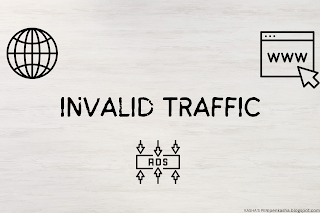 |
Welcome back, fellow bloggers and readers! Today, we're diving into a crucial topic that affects the success and credibility of your blog—invalid traffic. As bloggers, we work hard to produce high-quality content, engage our audience, and drive traffic to our websites. However, not all website visitors are genuine, and some can actually harm our blog's performance. In this article, we'll explore what invalid traffic is, how it impacts bloggers, and most importantly, how to mitigate its negative effects.
Understanding Invalid Traffic
Invalid traffic refers to the visits generated on a website that do not come from real users genuinely interested in the content. Instead, they are often automated or artificial interactions that skew website analytics, distort user engagement metrics, and compromise the overall user experience. These fake visitors are typically driven by malicious intentions or unintentional circumstances, both of which can negatively impact a blog's performance.
Types of Invalid Traffic
Bot Traffic:
Bots are automated programs that crawl websites for various purposes. Some bots are helpful, such as search engine crawlers, but others are malicious. Bot traffic can distort website analytics, generate false engagement metrics, and consume server resources.
Click Fraud:
Click fraud involves artificially inflating the number of clicks on online advertisements or sponsored content with the intention to generate revenue or sabotage a competitor. Click fraud not only wastes advertising budgets but also leads to inaccurate campaign performance analysis.
Proxy Traffic:
Proxy traffic occurs when users access a website through proxy servers. While some users may genuinely use proxy servers for privacy or security reasons, others exploit proxies to manipulate website traffic or hide their true identities. Proxy traffic can make it challenging to analyze genuine user behavior accurately.
Spam Referrers:
Some spammy websites use automated scripts to send referral traffic to other websites, including blogs. This traffic appears in your analytics as if users are visiting your blog from those spammy sites, but in reality, they may not even open your pages. This skews your traffic data and can make it difficult to identify genuine referrers.
Impacts of Invalid Traffic on Bloggers
Skewed Analytics:
Invalid traffic distorts website analytics, making it difficult to accurately measure the performance of your blog. You may not be able to identify the true engagement levels, conversion rates, or user behavior patterns.
Revenue Loss:
For bloggers who monetize their websites through advertising or affiliate marketing, invalid traffic can lead to revenue loss. Advertisers pay based on impressions, clicks, or conversions, and if these metrics are inflated by fraudulent traffic, it diminishes your blog's credibility and affects potential earnings.
SEO Implications:
Search engines prioritize user experience, and if your blog is plagued with invalid traffic, it may negatively impact your search engine rankings. High bounce rates, low average time on page, or suspicious click-through rates can signal poor user engagement and prompt search engines to lower your visibility.
Mitigating the Impact of Invalid Traffic
Implement Bot Detection and Filtering:
Utilize specialized tools and plugins that can identify and block bot traffic from accessing your blog. These tools can differentiate between human visitors and bots, allowing you to analyze genuine user behavior accurately.
Set Up IP Blocking:
Monitor your website's traffic and identify IP addresses associated with suspicious or excessive activities. By blocking these IPs, you can minimize the impact of unwanted traffic.
Use Captchas:
Implementing captchas on forms or login pages can help filter out automated bot interactions. Captchas require users to prove their human identity by completing simple tasks, ensuring that only genuine visitors can access your blog's content.
Regularly Monitor Referral Traffic:
Keep an eye on your blog's referral traffic and analyze it for any suspicious or spammy sources. Identify and block such sources to maintain accurate data and avoid being misled by false referrers.
Conclusion
Invalid traffic is a menace that can affect the credibility, revenue, and performance of any blog. As bloggers, it is essential to understand the various types of invalid traffic and their potential impacts. By implementing effective measures to mitigate the negative effects of invalid traffic, you can safeguard your blog's integrity, maintain accurate analytics, and enhance user experience.
Remember, fellow bloggers, building a successful blog requires constant vigilance and adaptation to the ever-changing digital landscape. Share your experiences and thoughts on invalid traffic in the comments below. Don't forget to subscribe to our blog by filling out the form in the footer to receive regular updates and exclusive content. Together, we can create thriving and secure blogging environments for everyone!
